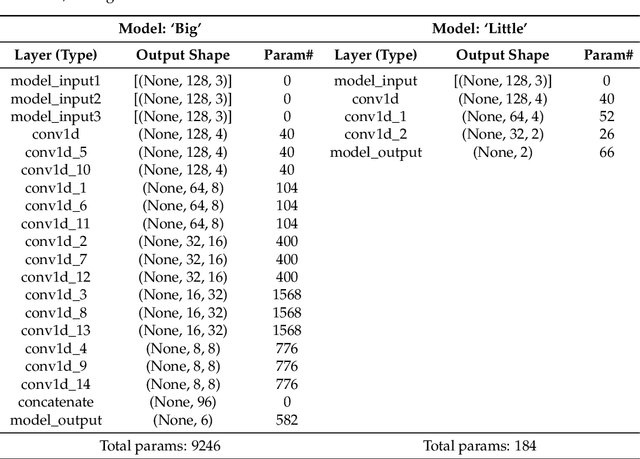Zichao Shen
Beyond Human Preferences: Exploring Reinforcement Learning Trajectory Evaluation and Improvement through LLMs
Jun 28, 2024



Abstract:Reinforcement learning (RL) faces challenges in evaluating policy trajectories within intricate game tasks due to the difficulty in designing comprehensive and precise reward functions. This inherent difficulty curtails the broader application of RL within game environments characterized by diverse constraints. Preference-based reinforcement learning (PbRL) presents a pioneering framework that capitalizes on human preferences as pivotal reward signals, thereby circumventing the need for meticulous reward engineering. However, obtaining preference data from human experts is costly and inefficient, especially under conditions marked by complex constraints. To tackle this challenge, we propose a LLM-enabled automatic preference generation framework named LLM4PG , which harnesses the capabilities of large language models (LLMs) to abstract trajectories, rank preferences, and reconstruct reward functions to optimize conditioned policies. Experiments on tasks with complex language constraints demonstrated the effectiveness of our LLM-enabled reward functions, accelerating RL convergence and overcoming stagnation caused by slow or absent progress under original reward structures. This approach mitigates the reliance on specialized human knowledge and demonstrates the potential of LLMs to enhance RL's effectiveness in complex environments in the wild.
Advanced Millimeter-Wave Radar System for Real-Time Multiple Human Tracking and Fall Detection
Mar 08, 2024



Abstract:This study explores an indoor system for tracking multiple humans and detecting falls, employing three Millimeter-Wave radars from Texas Instruments placed on x-y-z surfaces. Compared to wearables and camera methods, Millimeter-Wave radar is not plagued by mobility inconvenience, lighting conditions, or privacy issues. We establish a real-time framework to integrate signals received from these radars, allowing us to track the position and body status of human targets non-intrusively. To ensure the overall accuracy of our system, we conduct an initial evaluation of radar characteristics, covering aspects such as resolution, interference between radars, and coverage area. Additionally, we introduce innovative strategies, including Dynamic DBSCAN clustering based on signal energy levels, a probability matrix for enhanced target tracking, target status prediction for fall detection, and a feedback loop for noise reduction. We conduct an extensive evaluation using over 300 minutes of data, which equates to approximately 360,000 frames. Our prototype system exhibits remarkable performance, achieving a precision of 98.9% for tracking a single target and 96.5% and 94.0% for tracking two and three targets in human tracking scenarios, respectively. Moreover, in the field of human fall detection, the system demonstrates a high accuracy of 98.2%, underscoring its effectiveness in distinguishing falls from other statuses.
MiliPoint: A Point Cloud Dataset for mmWave Radar
Sep 23, 2023



Abstract:Millimetre-wave (mmWave) radar has emerged as an attractive and cost-effective alternative for human activity sensing compared to traditional camera-based systems. mmWave radars are also non-intrusive, providing better protection for user privacy. However, as a Radio Frequency (RF) based technology, mmWave radars rely on capturing reflected signals from objects, making them more prone to noise compared to cameras. This raises an intriguing question for the deep learning community: Can we develop more effective point set-based deep learning methods for such attractive sensors? To answer this question, our work, termed MiliPoint, delves into this idea by providing a large-scale, open dataset for the community to explore how mmWave radars can be utilised for human activity recognition. Moreover, MiliPoint stands out as it is larger in size than existing datasets, has more diverse human actions represented, and encompasses all three key tasks in human activity recognition. We have also established a range of point-based deep neural networks such as DGCNN, PointNet++ and PointTransformer, on MiliPoint, which can serve to set the ground baseline for further development.
Big-Little Adaptive Neural Networks on Low-Power Near-Subthreshold Processors
Apr 19, 2023



Abstract:This paper investigates the energy savings that near-subthreshold processors can obtain in edge AI applications and proposes strategies to improve them while maintaining the accuracy of the application. The selected processors deploy adaptive voltage scaling techniques in which the frequency and voltage levels of the processor core are determined at the run-time. In these systems, embedded RAM and flash memory size is typically limited to less than 1 megabyte to save power. This limited memory imposes restrictions on the complexity of the neural networks model that can be mapped to these devices and the required trade-offs between accuracy and battery life. To address these issues, we propose and evaluate alternative 'big-little' neural network strategies to improve battery life while maintaining prediction accuracy. The strategies are applied to a human activity recognition application selected as a demonstrator that shows that compared to the original network, the best configurations obtain an energy reduction measured at 80% while maintaining the original level of inference accuracy.
* 27 pages, 17 figures, https://github.com/DarkSZChao/Big-Little_NN_Strategies
 Add to Chrome
Add to Chrome Add to Firefox
Add to Firefox Add to Edge
Add to Edge